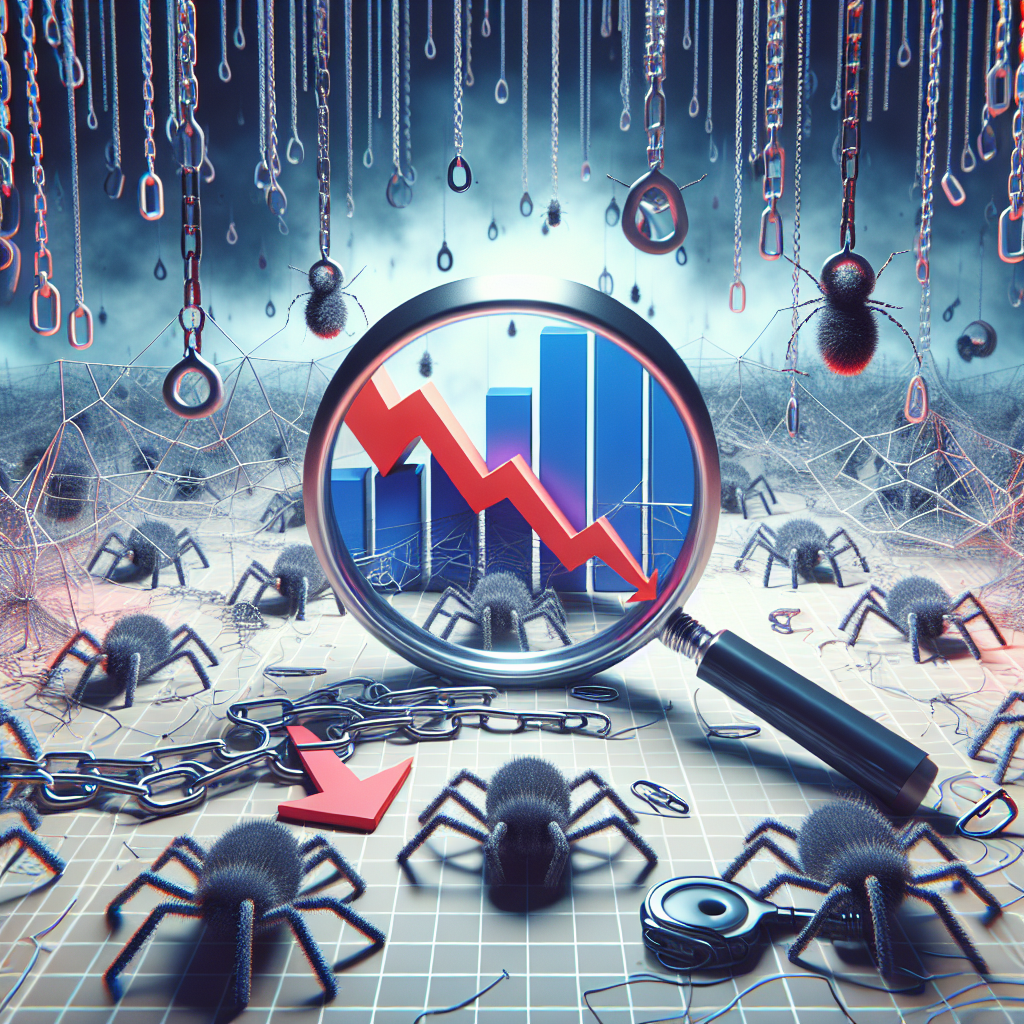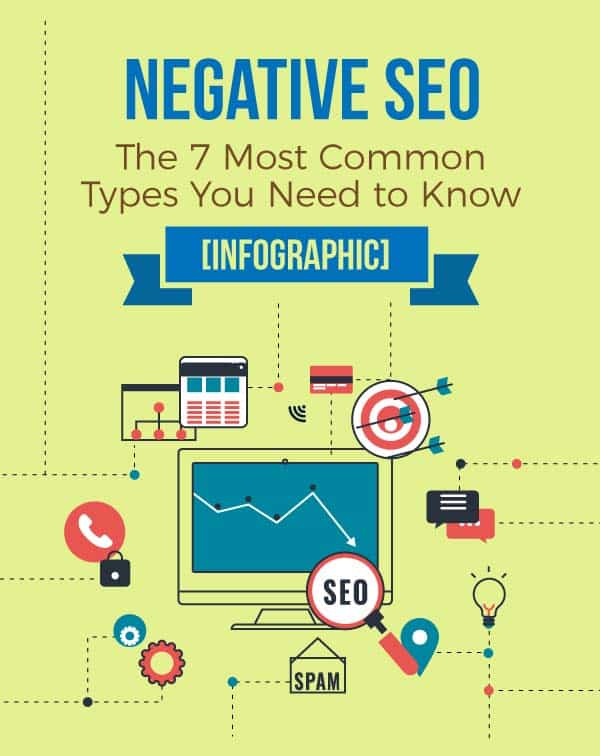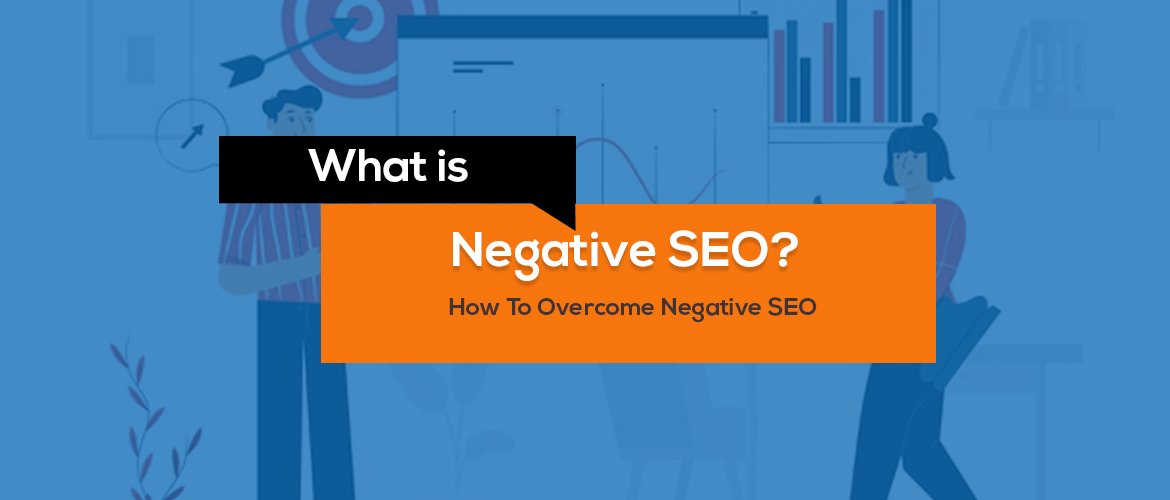Uncover the dark side of SEO with the hidden dangers of negative SEO tactics and how they can harm your website.

Image courtesy of via DALL-E 3
Table of Contents
Introduction to Negative SEO
In this section, we will introduce the concept of Negative SEO and explain why it is important for websites. We’ll talk about how it can affect a website’s rank on search engines.
What is Negative SEO?
Imagine if someone wanted to win a race not by running faster themselves, but by secretly tying the shoelaces of their competitors. That’s a bit like what negative SEO is – it’s when someone tries to harm other websites in sneaky ways to make their own website look better. But just like cheating in a race isn’t fair or nice, negative SEO isn’t a good thing to do online.
Why Do People Use Negative SEO?
Some people might try to use negative SEO because they want their own website to rank higher on search engines like Google. Others might do it to try and hurt a website that they see as competition. But no matter the reason, negative SEO is never a good way to play fair on the internet.
Bad Backlinks
Bad backlinks can have a negative impact on a website’s ranking. Let’s delve into what bad backlinks are and how they are connected to negative SEO.
What are Backlinks?
Backlinks are links that lead from one website to another. They are like upvotes for a website, showing search engines that it is reputable and valuable. In general, backlinks are good for a website as they can boost its ranking on search engine results pages.
How Bad Backlinks Work
On the flip side, bad backlinks, also known as spam links, can harm a website’s ranking. When a website has too many low-quality or irrelevant backlinks pointing to it, search engines may view it as trying to manipulate its ranking. This can make the website appear suspicious and lead to a drop in its search engine ranking.
Fake Negative Reviews
Reviews are comments or opinions that people leave on websites after using a product or service. Fake reviews are dishonest comments that are not real and are often written to make a business look bad when it doesn’t deserve it.

Image courtesy of www.greengeeks.com via Google Images
Impact of Fake Negative Reviews
Fake negative reviews can be very harmful to a website’s reputation. When people see bad reviews, they might decide not to visit or buy from that website. This can make the website lose customers and trust, even if the bad reviews are not true.
Content Theft
Content theft is when someone takes information, images, or text from a website without permission. It’s like copying someone else’s homework and claiming it as your own. This is not only unfair, but it can also harm the original website.
Problems with Duplicate Content
Having the same content on multiple websites can confuse search engines. When search engines see the same information on different sites, they don’t know which one is the original. As a result, it can lower a website’s ranking because search engines may not show duplicate content in search results, affecting the visibility of the website.
Click Fraud
Click fraud is when people click on ads just to use up someone’s advertising budget. Essentially, it involves clicking on online advertisements with no real interest or intent, purely to drain the advertiser’s finances.

Image courtesy of www.pagetrafficbuzz.com via Google Images
Impact of Click Fraud
Click fraud can have detrimental effects on businesses that rely on pay-per-click advertising. By artificially inflating click numbers, it can waste advertising money and reduce the effectiveness of online ads. This deceptive practice not only drains resources but also distorts the true success of advertising campaigns.
Website Hacks
A website hack is when a malicious individual gains unauthorized access to a website and inserts harmful code or makes changes to the site without the owner’s permission. This intrusion can lead to various negative consequences for the website and its visitors.
Types of Hacks
There are several types of website hacks that can compromise the security and integrity of a website. One common form of hacking is the insertion of malware, which can infect visitors’ devices or steal sensitive information. Another type of hack involves defacing the website, where the hacker alters the appearance of the site to spread false information or cause confusion.
Protecting Your Website
In this section, we will discuss steps to protect a website from negative SEO attacks.

Image courtesy of www.pagetrafficbuzz.com via Google Images
Monitor Your Backlinks
Regularly checking your backlinks can help you catch bad links early. Bad backlinks can harm your website’s ranking and make it look suspicious to search engines. By monitoring your backlinks, you can identify and disavow any harmful links that may be affecting your site’s performance.
Use Strong Security
Using strong security measures is crucial to protecting your website from hacks and other forms of negative SEO. Make sure to use complex passwords, update your software regularly, and implement other security measures such as two-factor authentication. By staying proactive with your site’s security, you can reduce the risk of falling victim to malicious attacks.
Keep an Eye on Reviews
It’s essential to monitor reviews of your website and report any fake ones. Fake negative reviews can damage your website’s reputation and reduce trust from visitors. By staying vigilant and addressing any fake reviews promptly, you can maintain a positive online reputation and build trust with your audience.
Tools and Resources
SEO tools are essential for monitoring and improving a website’s performance. These tools can help track backlinks, check for duplicate content, and analyze keywords to optimize content. Some common SEO tools include Moz, SEMrush, and Ahrefs. By using these tools, website owners can stay on top of their SEO efforts and identify any negative SEO attacks early on.
Security Software
Security software plays a crucial role in protecting websites from hacks, malware, and other cyber threats. Programs like Sucuri, Wordfence, and Cloudflare provide website owners with the tools they need to secure their sites and prevent unauthorized access. By investing in robust security software, website owners can safeguard their online presence and minimize the risk of falling victim to negative SEO tactics.
Conclusion
In this article, we have explored the concept of negative SEO and how it can harm websites. Negative SEO involves unethical tactics to damage a competitor’s website or improve one’s own search engine rankings. It includes practices like creating bad backlinks, fake negative reviews, content theft, click fraud, and website hacks.

Image courtesy of www.acmethemes.com via Google Images
Summary of Key Points
We have discussed the different forms of negative SEO and how they can adversely impact a website’s reputation, trustworthiness, and search engine rankings. Bad backlinks can lower a website’s rank, fake negative reviews can damage reputation, and content theft can confuse search engines. Click fraud wastes advertising budgets, and website hacks can lead to severe consequences.
It is crucial for website owners to remain vigilant and protect their websites from negative SEO attacks. By monitoring backlinks, using strong security measures, and staying alert for fake reviews, websites can reduce the risk of being targeted by malicious tactics.
Remember, prevention is key when it comes to negative SEO. By implementing proactive measures and staying informed about potential threats, website owners can safeguard their online presence and maintain a positive reputation.
Protecting your website against negative SEO is essential in today’s digital landscape, where online competition is fierce and unethical practices continue to pose threats. Stay informed, stay vigilant, and stay protected to ensure the success and integrity of your website.
Want to turn these SEO insights into real results? Seorocket is an all-in-one AI SEO solution that uses the power of AI to analyze your competition and craft high-ranking content.
Seorocket offers a suite of powerful tools, including a Keyword Researcher to find the most profitable keywords, an AI Writer to generate unique and Google-friendly content, and an Automatic Publisher to schedule and publish your content directly to your website. Plus, you’ll get real-time performance tracking so you can see exactly what’s working and make adjustments as needed.
Stop just reading about SEO – take action with Seorocket and skyrocket your search rankings today. Sign up for a free trial and see the difference Seorocket can make for your website!
FAQs
What is Negative SEO?
Negative SEO is when someone tries to harm another website’s rank on search engines in order to make their own website look better. This can be done by creating bad backlinks or fake negative reviews, stealing content, committing click fraud, hacking into websites, and more. It’s not a nice thing to do and can have serious consequences.
How Can I Tell if Someone is Using Negative SEO on My Website?
If you suspect someone is using negative SEO on your website, there are a few signs to look out for. Keep an eye on your website’s ranking and traffic, monitor your backlinks for any unusual or spammy links, watch out for a sudden increase in fake negative reviews, check for duplicate content that might have been stolen, and be wary of any unusual activity or security breaches on your site.
What Should I Do if My Website is Attacked?
If you believe your website is being targeted by negative SEO attacks, it’s important to act quickly to minimize the damage. First, document and analyze the attack to understand the extent of the harm. Next, take steps to remove any bad backlinks, fake reviews, or stolen content. Improve your website’s security measures to prevent further attacks, and consider reaching out to Google or other search engines for assistance in recovering your website’s rank.







